Do I like Trials of Mana? Well, yes. I do. I think.
You see, I suspect that my affection for Trials of Mana is nothing more than my fondness for an age gone by. Secret of Mana is a high-ranking favorite of mine, and as its successor Trials offers a similar tale of colorful heroes on a quest through a fantasy realm teeming with magic, evil, and adorable rabbit blobs called Rabites. It’s precisely the sort of game I loved as a kid: a big, gorgeous Super NES RPG that I could obsess over for months.
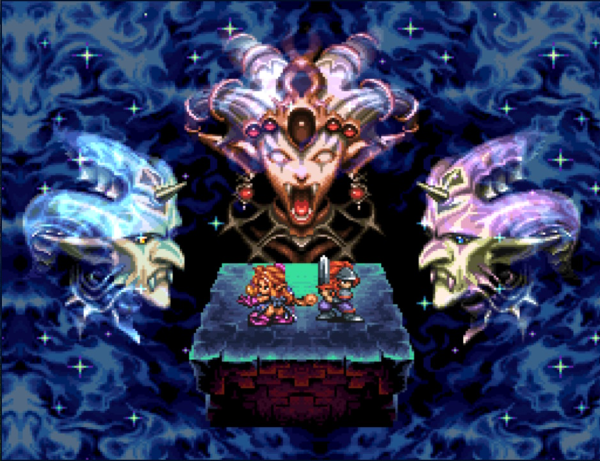
I never had the chance to properly obsess, though. I pored over magazine spreads that couldn’t decide whether to call the game Seiken Densetsu 3 or Secret of Mana 2, and I wrote letters begging Squaresoft to bring the game to North America, but there would be no such release. A dozen or so impressive RPGs arrived late in the Super NES lifespan and never left Japan, yet Seiken Dense—sorry, Trials of Mana—was the one I wanted most. Even though I never played it then, just wanting it is a fond memory. Nostalgia is at its most powerful when it is unearned.
After all of this, Trials of Mana isn’t the masterpiece my younger self envisioned. It’s hardly terrible, but it doesn’t rate among Square-made Super NES standouts like Chrono Trigger, Final Fantasy IV through VI, or even Secret of Mana. To be fair, I suspected this even back in 1996, when Nick Rox of GameFan called Trials of Mana “one of the ten best SNES games of all time” in the December 1995 issue and then, the very next month, admitted that the game got “unimaginably tedious.”
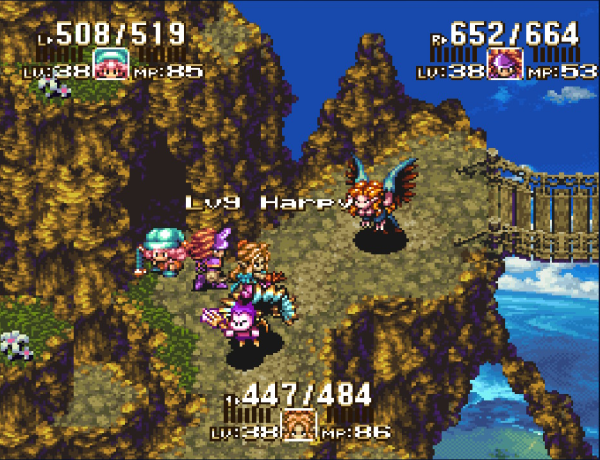
Why the tedium? Trials of Mana greatly simplifies its battles. It’s still an action-RPG with an overhead view and a three-character party, but combat has a strange auto-targeting system that isn’t as satisfying as Secret of Mana‘s free-roaming, do-it-yourself approach. Trials also lacks the diverse weapons that Secret of Mana boasted, and hacking at foes with the same swords and spears and staffs gets dull. It’s burdened further by the designers’ attempt to make bosses tougher by raising their hit points to absurd levels. A few quick, nasty fights arise, but most of the clashes with detailed, screen-filling creatures are tepid battles of attrition.
Trials of Mana also dices up its tale of nations driven to war over a power known as Mana. The game boasts six protagonists, but the player can choose only three of them: one lead and two supporting characters. You’ll run into the other adventurers during the story, effectively giving the game three central plots and six variations on them. That doesn’t sound so bad.
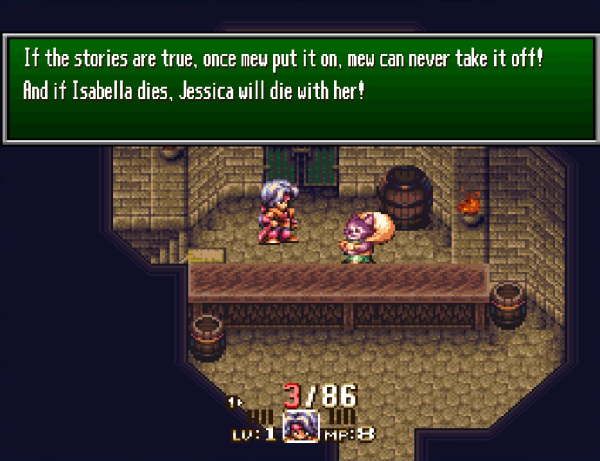
The problem is that Trials of Mana simply isn’t as rewarding as it would be if it stuck to Square RPG traditions and just gave you a solid single story with all six characters under your control. Five of those characters are likable, whether it’s Hawkeye ferreting out a conspiracy in his guild of thieves or Angela searching for the approval of a mother who tried to sacrifice her. Only the baby-talking Charlotte is terrible.
Yet there isn’t enough narrative depth to make three separate storylines satisfying. It feels like an RPG steak mechanically separated and compressed into three less palatable hot dogs.
I still have my reasons for liking Trials of Mana, and they’re not all misplaced. For starters, it’s a gorgeous, gorgeous game. The world may be just another RPG expanse of ice kingdoms and elf forests, but everything comes to life with wonderfully animated style: enemies bounce across the landscape, grasses and trees sway in the wind, and bosses fill the screen. Perhaps that’s why these battles are so long. They’re the game’s most amazing sights, from a three-part aerial duel against a manticore griffin to a clash with floating heads in what appears to be the depths of space.
And just as Secret of Mana thrived on its music, Trials of Mana bounces along on another soundtrack by the terribly underrated Hiroki Kikuta. Some of the more common selections are mundane, but when Kikuta strikes with a melancholy mana-tree dirge or the beats of riding a Flammie dragon through the skies, he nails it. There’s a long story about why Kikuta didn’t dominate the subsequent video-game generation as much as other Square composers. We’ll save that for another time. Right now, it’s enough that Trials of Mana’s music gets an international stage just when Kikuta’s work appears in the recent Indivisible.
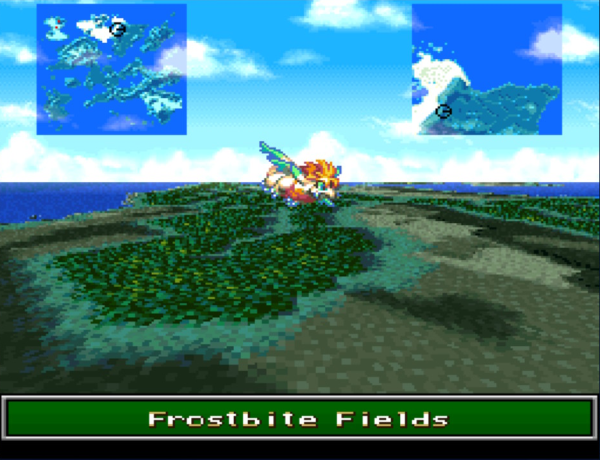
Simple its battles may be, but Trials of Mana tries out intriguing concepts. The characters all specialize in different arts; some fall into the typical classes of fighters and mages, but I can’t think of a real analogue for Kevin, a beastman who turns into a more powerful were-warrior when night falls. And that brings us to Trials of Mana‘s unique day-and-night cycles. Enemies change or grow stronger depending on the day and the hour, and some events, shops, and characters appear only at certain times.
The game’s other innovation comes with its Class-Change System, which lets each character follow light and dark paths to six different specialties. Each upgrade comes with distinct stat boosts, attacks, and spells. It’s a shame that party members can’t switch freely between the classes, like the job-swapping party members of Final Fantasy III or V or Tactics, but toying with saved games makes it easy to test out the various classes. Just watch out for the Quick Save option. In series tradition, Trials of Mana has a lot of bugs.
Most importantly, Trials of Mana marks the last time Square really understood the appeal of this series. The Mana games simplified and spread themselves even thinner with Legend of Mana, and later attempts at cohesive action-RPGs didn’t endure. Trials may be scattered, but it sticks together well enough to tell a straightforward and endearing little fairy tale. There is something solid inside Trials of Mana, and it won me over. In fact, my biggest complaint isn’t the battle system or the repetition or the punching-bag bosses. It’s the fact that the characters don’t interact enough.
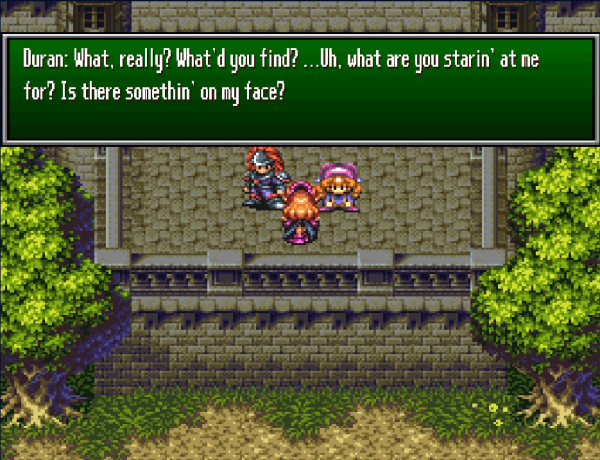
A casualty of Trials of Mana’s fragmented plot, the characters don’t play off each other as much as the heroes of Chrono Trigger, Lunar: Eternal Blue, Phantasy Star IV, or Final Fantasy VI. It’s fun to see them quibble and flirt and explain the weird customs of their homelands, but hours of quests and dungeons pass without any development. Scenes like Angela teasing Duran about his room are memorable simply because they’re so rare.
I hope that the upcoming Trials of Mana remake takes a hint from the otherwise unimproved Secret of Mana remake, which has the characters launch into little skits whenever they stay at an inn. I’d also hope that this new Trials would jettison its branching paths for a single arc with all six characters questing together, but that would be asking too much.
Trials of Mana isn’t an RPG for the ages, but I would have enjoyed it back in 1996. And I enjoyed it just as much this year. That nagging nostalgia won’t keep me from replaying the game, looking forward to the remake, and doing my best not to buy the overpriced toys. I like Trials of Mana, and it doesn’t matter why.

But I still hate Charlotte.

I played through this entire game on emulator almost…20 years ago (wow). I appreciate its ambition and depth but at the end of the day it’s simply not as fun to play as its predecessor.
ReplyDelete